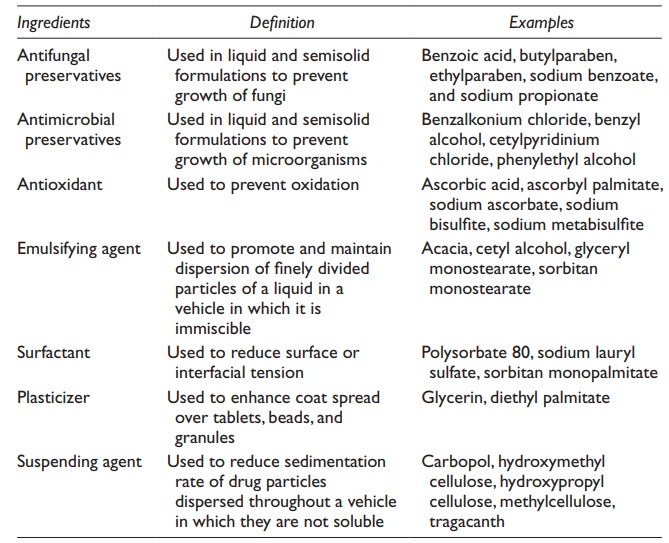Pharmaceutical considerations
| Home | | Pharmaceutical Drugs and Dosage | | Pharmaceutical Industrial Management |Chapter: Pharmaceutical Drugs and Dosage: Pharmaceutical considerations
Drug substances are seldom administered alone; rather, they are given as part of a formulation, in combination with one or more nonmedical agents (known as pharmaceutical ingredients or excipients) that serve varied and specialized pharmaceutical functions.
Pharmaceutical
considerations
Introduction
Drug
substances are seldom administered alone; rather, they are given as part of a
formulation, in combination with one or more nonmedical agents (known as pharmaceutical ingredients or excipients) that serve varied and
specialized pharmaceutical functions. Commonly used pharmaceutical ingredients
are listed in Table 3.1. Pharmaceutical
ingredients solubilize, suspend, thicken, dilute, emulsify, stabilize,
preserve, color, flavor, and fashion medicinal agents into efficacious and
appealing dosage forms.
Drug
absorption depends on its lipid solubility, formulation, and the route of
administration. The proper design and formulation of a dosage form require a
thorough understanding of the physical, chemical, and biologic characteristics
of the drug substances as well as that of the pharmaceutical ingredients to be
used in fabricating the product. The drug and pharma-ceutical ingredients must
be compatible with one another to produce a drug product that is stable,
efficacious, attractive, easy to administer, and safe.
Table 3.1 List of pharmaceutical
ingredients

Related Topics

